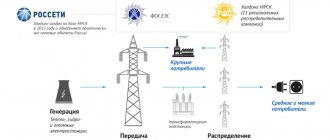Greetings to all blog readers!
Investing means constantly facing a variety of risks. Investors in their work have to accept the fact that it is quite normal to periodically lose part of their investments. This is the reality: those who do not take risks do not earn! However, this does not mean that you should simply accept losses, because investment risks can be managed. One of the most effective methods of reducing possible losses when investing is creating a portfolio of assets based on competent diversification of investments. In simple words, “do not put all your eggs in one basket,” but distribute your money between various financial instruments: shares of companies from different sectors of the economy, bonds, currencies, metals, etc. Diversification of investment risks is the most important lesson in any investment training course, so I tried to explain all the main nuances in an accessible and simple way.
Today we will look at the following questions:
- What is diversification in simple words
- What does risk diversification provide: examples
- Rules for proper investment diversification
- Limit to the effectiveness of investment diversification
- Two more mandatory types of diversification
Before we move on, a little blurb:
I would like to recommend you the investment accounting service from the partner of the Webinvestor Blog - the company Intelinvest . On it you can monitor your portfolio through the website or mobile application, and you do not need to provide passwords to import transactions. You can keep track of any assets: stocks, bonds, cryptocurrencies, precious metals, forex investments, etc. There is a functional free version for testing. If you would like to make a full subscription, use promo code 1VYV9CMSTD to get 20% off your first payment.
Thank you for your attention, let's continue!
What is diversification in simple words
Imagine that you are the manager of an investment fund and are responsible to your clients for the results. This means that losing money is extremely undesirable - your reputation will be damaged and people will leave you for competitors. Investors have entrusted a large sum of money to the fund and they have to choose where to invest it. Let's say you analyzed the situation on the stock market and selected 10 promising stocks, while there are statistics that on average the chances of growth are 7 out of 10, that is, 70%.
Now let's compare two possible scenarios:
- you invest in only one company;
- you invest in ten companies at once.
In the first case, the chances of making money are 70%, and you still have to guess which stock will grow. How much is in the second? Since statistically more often than not 6-8 stocks will be in the black and, accordingly, 4-2 in the minus, the probability of making money will be significantly higher than 70% - “by eye” about 90%. It turns out that investing in ten at once is safer! Therefore, you, as a fund manager who is responsible for investors’ money, will probably choose this option.
Further, there will be practical calculations, but first, the main thing is to understand the essence: diversifying an investment portfolio can significantly reduce the risk of losing money in investing and thereby increases the likelihood of making money. Let's summarize in simple words:
Diversification of investment risks is the distribution of the entire investment amount across several instruments in order to reduce the overall risk of the investment portfolio.
Just like the proverb, we put our eggs (money) into different baskets (investment options). When investment diversification is applied, in the event of an unfortunate set of circumstances, only part of the money is lost, and not all savings at once. In fairness, the proverb should be continued - “Don’t put all your eggs in one basket and keep the baskets in different places .” After all, if they are in one place and, say, a fire occurs there, you will still lose everything.
Well, you can still somehow protect yourself from fire by diversifying where you store your baskets (what a phrase!). But what happens if the eggs are not simple, but golden?
Article on the topic: How to invest in gold correctly
If the basket falls, the golden eggs will not break. On the other hand, you obviously will not be happy about the sharp drop in prices for the precious metal. In simple words, portfolio diversification will not save you from this. Such risk is called market or systematic:
Systematic (market) risk is risk that is specific to the entire market, such as inflation, macroeconomic, or political.
Diversification of investment risks cannot affect systematic risk. However, each investment instrument also has individual (non-systemic, non-market) risks. And the diversification effect will work for them.
To organize the previous theoretical text in your head, take a look at a simplified diagram of investment portfolio diversification:
As you can see, the more an investor uses a variety of securities N , the lower the risk becomes in the form of an indicator σ (standard deviation). Market risk cannot be removed, so it remains at any portfolio size, but the diversified portfolio begins to fall rapidly with each added security. The larger the number N, the more horizontal the line becomes - this suggests that investment diversification has its limits; it cannot reduce losses to zero.
Scientific confirmation of the feasibility of diversifying investment risks was received back in the 1950s: it was then that the 1990 Nobel laureate Harry Markowitz developed the foundations of modern portfolio theory. Mathematics confirmed what investors already knew intuitively: it is necessary to assemble an investment portfolio, this is definitely better than investing all the money in a single instrument. For those who are interested in the details of the theory, I’ll send it to Wikipedia for now; we’ll talk about it some other time. However, I must talk about the basic mathematics of diversification right now.
Gold
An interesting pattern: the price of gold usually rises during economic booms and downturns. The rest of the time, the price of the yellow metal remains stable.
Over the past two years, the price of gold has remained stable at approximately the same level. Now gold costs about $1,300/ounce. By the way, if you look at history, you can see that there were periods when money completely depreciated, but gold never did.
The most profitable time to buy precious metals is from mid-June to mid-August, as well as in January-February: at this time prices are minimal.
How to invest in gold?
You can, for example, open a metal account in a bank.
A metal account is an account opened by a bank for individuals and legal entities and for conducting transactions with precious metals.
These accounts do not count money, but grams (kilograms) of precious metals.
Opening an account is simple: you need to come to the bank and write a corresponding application. The second copy of the agreement remains with the investor. The bank will sell gold based on prices on the world market.
Important! If, when closing an account, you want to take gold in kind, you will have to pay VAT of 18% and a transaction fee.
Metal accounts, like regular deposits, are available on demand and time-sensitive. The Savings Bank specializes most in this service. But the share of metal deposits in the total number of deposits is still small. Perhaps this is explained by the existence of a kind of barrier to investments of this kind: banks will open an account only when purchasing a certain amount of metal. When opening metal accounts, you must remember that they are not subject to insurance by the Deposit Insurance Agency.
Another way to invest is to purchase investment or commemorative (collectible) gold coins. Investment coins differ from commemorative coins in that the value of the former is influenced solely by exchange prices for precious metals. Commemorative coins are valuable not only for the metal from which they are made, but also have artistic value. The growth in the value of collectible coins in the future depends on the originality of the design and circulation (the smaller it is, the more expensive they will be in the future). Prices for investment coins depend only on the results of trading on world exchange platforms. Among the leaders in the sale of coins is the Savings Bank.
Benefits of risk diversification with examples
Let's use a real example to see how diversification affects the risks of an investment portfolio. To begin, I took the stock price history of the world's 10 largest companies and calculated the return and risk indicators for each of them separately and within the overall portfolio:
If you wish, you can view and check all the calculations from the article yourself:
So, 7 out of 10 companies were able to earn money in 12 months, Microsoft and VISA the most. At the beginning of the article, I simply made up an example about 70% profitable stocks, but as you can see, it is not far from the truth. Explanation of indicators in the table:
- annual return—actually, how much a company’s shares have grown in 12 months. The results are very different: from 28% for Microsoft to -22% for Alibaba Group;
- SD (standard deviation) is an indicator of the strength of the spread of daily returns. The smaller this spread, the lower the investment risks. We see that diversification had a noticeable impact on the portfolio standard deviation - 1.30% versus 1.73% (average for all stocks separately);
- maximum drawdown is the largest drop in prices from the top to the bottom following it, that is, the largest possible losses for the investor. The portfolio's drawdown of 21% is slightly less than the average drawdown of 27% for each stock;
- profitability/drawdown - shows the ratio of the profit received and possible losses in the process. The higher this indicator, the better. Within the portfolio, the indicator increased from 0.26 to 0.32.
Mathematics clearly confirms that portfolio diversification reduces investment risks. It’s especially nice that drawdowns are decreasing, because no one likes to lose money. However, you probably might have thought: “In the portfolio, we received a modest return of 7%, compared to 25%+ from Microsoft and VISA, which is somehow weak. Maybe it’s worth investing in these two companies?”
First of all, you have to be Vanga to use such a successful investment strategy. And yet it is true that the gain is not very big, because if you look at the profitability/drawdown indicator, it only increased by 0.06. And this is when 3 out of 10 companies reached a value of 1 or higher. The fact is that the portfolio we have compiled is not very good in terms of investment diversification - some stocks are strongly related to each other, for example, Microsoft and VISA:
As you can see, the graphs are almost identical. I may not know what the two companies do, but the relationship is visible to the naked eye. What happens if you add two of these stocks to one portfolio? In fact, they will duplicate each other and, in the case of our portfolio of 10 companies, will occupy a share of 2/10 = 20%. The impact on the portfolio risks of such a mega-stock will be extremely high, causing drawdowns to increase and diversification to deteriorate. Now these two stocks have risen by 25%, next time they may fall and greatly increase the overall drawdown of the portfolio.
Portfolio diversification across industries is one of the core principles of stock investing. If you invest all your money in, say, the oil industry, a fall in the price of black gold will lead to a fall in the shares of ALL companies.
To find relationships between stocks, it is convenient to use the calculation of correlation coefficients in Excel. I found out the strength of the relationship for each pair of stocks and presented the results in a table. It turned out that Microsoft and VISA are far from an isolated case in our portfolio:
Let me remind you that the closer the correlation value is to one, the stronger the relationship. As you can see, not only Microsoft and VISA, but also Alphabet, Apple and Amazon have strong relationships with each other. This is understandable - the companies’ areas of activity intersect in many areas: IT technologies, artificial intelligence, mobile devices...
As you can see, it is not so easy to assemble a high-quality investment portfolio of shares: you need to diversify the portfolio across different sectors of the economy so that there are fewer interconnections. However, the largest businesses operate within a globalized world market and systemic risks have a strong impact on them. Suffice it to recall the global crisis of 2008, when the American stock market fell by 50% and all areas of the economy suffered from it to a greater or lesser extent.
In other words, you don’t have to limit yourself to investing in stocks. I wrote about various investment options in this article, but if we want to build a portfolio with minimal correlations, it’s definitely worth taking a closer look at PAMM accounts. Just look at the strength of the diversification effect in a portfolio of 10 PAMM accounts:
The standard deviation decreased three times to 0.5%, the drawdown decreased 4 times to -6%, and the ratio of profitability and drawdown reached 3.29, that is, 3.5 times more! The risk indicators of PAMM accounts from the list are not so different from stocks, but diversification worked many times better. This was achieved primarily because I selected PAMMs without strong correlations with each other:
Calculating correlation allows you to quickly find non-obvious relationships between assets and this technique is definitely worth using if you want to put together a high-quality investment portfolio. What other nuances and techniques do you need to know in order to properly diversify your investments? More on this later!
The essence of the concept
When applied to investments, diversification involves the distribution of investments across different financial instruments. Moreover, the choice of these financial instruments should be based on balancing risks. For example, shares are purchased not just in various enterprises, but in enterprises belonging to various industries. After all, for example, a fall in Gazprom shares may very likely be accompanied by a fall in the majority of shares in resource-extracting enterprises. And diversification by investing in other areas of activity (for example, in high-tech enterprises, banking, etc.) will help keep the value of the investment portfolio at approximately the same level.
In addition to diversification into various areas of activity, two more main directions can be distinguished:
- Diversification by asset type. Involves investing funds in various types of investment objects. For example, when investing in securities, you should not limit yourself to stocks alone, but also dilute your portfolio with assets such as bonds, bank deposits, etc.
- Geographical diversification involves investing in facilities located in different countries. This division will help minimize various kinds of political and economic risks associated with changes in economic policy.
Rules for proper investment diversification
Many novice investors think that to protect their portfolio from losses, it is enough to simply divide their capital into several parts. They believe that the risks will reduce on their own - but this is naive diversification and it often works poorly, as we saw in the portfolio of the 10 largest companies.
When compiling an investment portfolio, first of all, you need to understand investment diversification should protect you . To do this, at a minimum, you should know what risks there are, and then try to reduce each of them. For example, if we return to PAMM accounts again, we need to consider the following:
- trading - possible losses from unsuccessful trading of a PAMM manager on the foreign exchange market;
- non-trading - the likelihood that the broker will cheat and not return the money;
- inflationary - losses due to high inflation of the currency in which you invest;
- foreign exchange - losses due to unfavorable changes in the exchange rate of the investment currency.
In PAMM accounts (and any other exchange instruments), trading risk is most often encountered, because transactions do not always end successfully. It is from trading losses that an investor first of all needs risk diversification and for this it is enough to invest in several PAMM accounts (do not forget to check them for correlation). Next, you can reduce non-trading risks - to be on the safe side, we invest through 2 or 3 brokers. Inflation and currency risk can be reduced using the “two birds with one stone” principle - investing money in dollars/euros and national currency simultaneously.
Another rule of good diversification: use different investment instruments . This will even reduce some of the systematic risks of the portfolio, which cannot be eliminated by investing only in stocks. One of the most striking examples is the well-known pattern about the stock market and gold:
If you look closely, you will see how during and after crises on the American stock market, gold begins to actively increase in price. And vice versa - since 2013, gold has remained at the same level, and the index is constantly conquering new peaks. This is not an accident, but a normal economic process: gold is considered a reliable asset during crises, investors massively transfer their capital to it when the stock market falls. Now, by the way, there is more and more talk about a new global crisis, so the precious metal can again become a relevant option for diversification.
Finally, it is worth mentioning one more rule of quality diversification:
Rebalancing is the adjustment of asset shares to return to the original percentage composition of the portfolio.
In order not to go too far, we will again use the example of stocks + gold. Let's say we invested 50% to 50% in these assets. In the first year, stocks rose and gold fell in price; the new distribution of shares in the portfolio was 60% to 40%. Rebalancing consists of selling some shares and buying more gold to return to the 50/50 scheme.
What have we really done? We followed the oldest principle of trade - “buy cheaper, sell more expensive”! The price of the shares rose and we sold some of them at a good price. Using the profits we made, we bought additional cheap gold. It really works, take a look at the graph:
Comparison of portfolios without rebalancing and with rebalancing every 12 months
Over 25 years of reinvesting profits, the portfolio's gain with rebalancing was more than 100% of the profit, which is quite a lot. With its help, we earn more, while complying with diversification requirements.
So, four basic rules of quality diversification:
- don’t just “put money into baskets”, but reduce specific risks (trade, currency, inflation...);
- check assets for correlation and interrelationships to improve diversification;
- use different investment instruments, especially those that have an inverse economic relationship (for example, stocks and gold);
- use rebalancing to increase portfolio returns.
Next I would like to raise another interesting topic.
Why is that?
If you convert most of it, for example, into dollars, then if you urgently need money, you will have to change the currency every time. And you will constantly lose money on the exchange rate.
Which foreign currency should I choose for savings? Firstly, it must be one of the reserve currencies. There are six reserve currencies in the world: the US dollar, the euro, the pound sterling, the Japanese yen, the Chinese yuan and the Swiss franc. Secondly, it should be the currency that you use most often. If you have never been to Japan and do not plan to, you do not need to choose the yen for savings.
Limit to the effectiveness of investment diversification
Every investor sooner or later has a question: how many assets should there be in a portfolio for diversification? Maybe just 5 or 10 is enough? Or do you need to strain yourself and collect a large briefcase? But I wouldn’t want this, because many problems and difficulties arise:
- the more assets there are, the more difficult it is to keep track of them;
- a large portfolio requires a lot of money;
- you will have to spend a lot of time analyzing and accounting for investments;
- the number of quality assets is often limited.
And yet, is there any point in collecting a large portfolio? As always, we will answer this question using calculations. As an example, I decided to take the well-known Dow Jones stock index, which contains shares of a wide variety of sectors of the American economy. It includes 30 companies, just enough to test the diversification of both small and large portfolios.
To solve the problem, I built random portfolios of 1,2,3...30 shares and, by searching, looked for the range in which the risk value of a portfolio of N shares fell. First of all, we considered the standard deviation, which shows the spread of returns (the larger the spread, the riskier the investment method is considered):
What do we see? As the number of shares increases from 1 to 4, the RMSE quickly falls from 1.4% to 1% and even lower. Then, quite quickly, at a portfolio size of 7, the value of 0.9% is reached, but it was not possible to reach the next goal of 0.8%. Progress almost completely stops at 15-20 shares. To further significantly reduce risk, dozens of companies must be added, which may require too much analytical work from the investor. It's better to just invest directly in an index, but that's a completely different story. A similar picture can be seen in the drawdowns:
The maximum drawdown of portfolios begins to decrease sharply when moving from 1 to 5 shares and reaches -22%. Then it is possible to win another 2% only by 14, and the next 2% is not possible even by 30. Best performance on about 20 stocks.
In simple terms, the following conclusions can be drawn from these diversification calculations:
- the minimum portfolio size to significantly reduce risks due to diversification is 4-5 assets;
- the acceptable limit of diversification efficiency is achieved at 15-20 assets.
From a mathematical point of view, there is most likely no specific limit to the diversification of investment risks, since the risk reduction is a little bit, but still occurs even after 20 shares in the portfolio. How advisable it is to invest in tens or hundreds of assets at the same time is probably something each investor must decide for himself.
I wonder what size the portfolios of blog readers are? Take the survey:
We could end here, but finally I want to share with you one more interesting thought.
Ideal briefcase
An example of “ideal diversification” might look like this.
Let's say you are 30 years old, you have 1,000,000 rubles of investment capital and you live in Russia.
1,000,000 rubles is your entire investment capital.
You leave 700,000 in rubles. Of these, you invest 210,000 in bonds (30%), for 490,000 rubles you buy shares at the rate of about 40,000 - the share of one of the 12 companies in the portfolio.
You buy dollars with 300,000 rubles. They can either be left as is, or also distributed between Eurobonds and shares of foreign companies, by analogy with investments in rubles.
If you have a question about personal finance, rights or laws, please write. We will answer the most interesting questions in the magazine.
Why is that?
If you convert most of it, for example, into dollars, then if you urgently need money, you will have to change the currency every time. And you will constantly lose money on the exchange rate.
Which foreign currency should I choose for savings? Firstly, it must be one of the reserve currencies. There are six reserve currencies in the world: the US dollar, the euro, the pound sterling, the Japanese yen, the Chinese yuan and the Swiss franc. Secondly, it should be the currency that you use most often. If you have never been to Japan and do not plan to, you do not need to choose the yen for savings.











